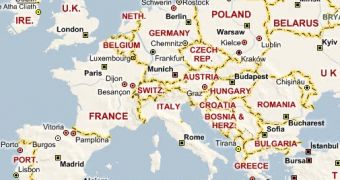It's quite simple to see where Microsoft has been, or where Virtual Earth is. All you have to do is head over at Live Maps and give the service a try. But when it comes down to where Virtual Earth is going, things are not as simple. However, Microsoft is indeed offering a sneak peek into the evolution of Virtual Earth. Anna Liu, Architect Advisor at Microsoft Australia, has pointed out that the Research & Development efforts, around Virtual Earth and the online geo-information area, have come into the limelight with the Virtual Earth Academic Research Collaboration 2007 RFP Awards. In this manner, you can enjoy a preview of the future functionality, features and capabilities that are coming to Virtual Earth.
There are no less than 10 recipients of the Virtual Earth Academic Research Collaboration RFP awards around the world, including the U.S., Austria, Germany, Australia and China. Microsoft Research will pour no less than $400,000 to fund the 10 projects that cover an extensive evolution of Virtual Earth in a variety of the service's aspects.
According to Microsoft, the 10 projects will deal with new tourist maps rendering techniques, semantic enrichment of street side imagery, city capture, enhancement of photographs using Virtual Earth, efficient image correspondence and indexing methods for urban scene and object recognition, local search for hotel and restaurants using econometrics spatial data and image classification, integrating online maps with aerial imagery, a new view on news, towards reconstructing the world from photos on the Internet and on testing non-testable information retrieval systems with geographic components on the web.
"This RFP focuses on advancing academic research and publication in the area of Internet technologies and services, particularly in computer vision, location-based search, and information discovery and sharing. To assist RFP awardees, Microsoft made available street imagery data from one residential area, and the downtown area of San Francisco including: 1) color satellite imagery that covers the area; 2) street-side images with their estimated position and orientation accumulated in 4m intervals; and 3) models of the houses in the area, with some textured buildings. Microsoft's geographic imagery, in combination with the Interactive Virtual Earth software development kit, will enable researchers to explore potential applications of location-based web searches," Microsoft revealed.

 14 DAY TRIAL //
14 DAY TRIAL //